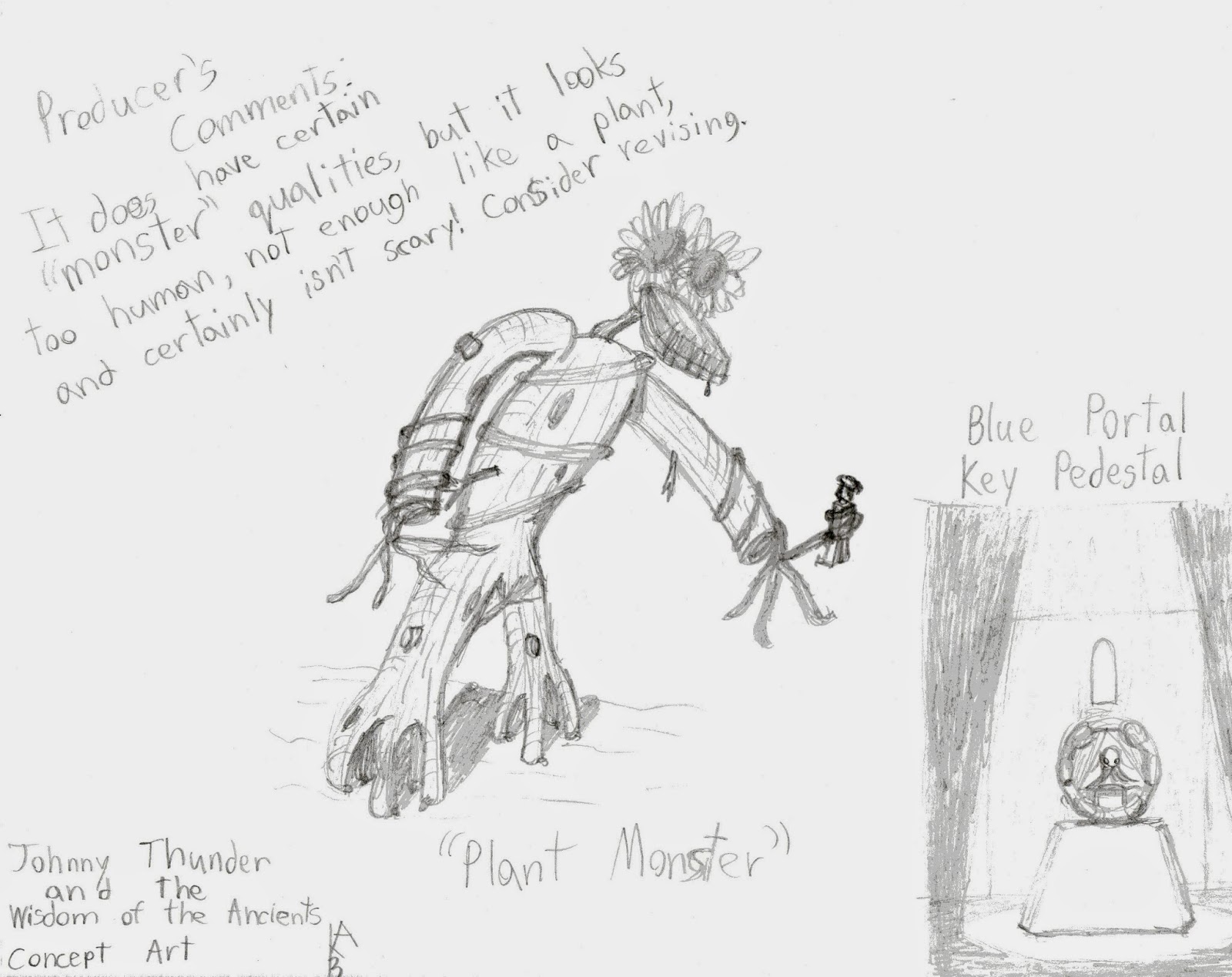Archive Collections: The Evolution of Johnny Thunder 3's Plant Monster
By: Andrew Bermudez
(Mustache Maniacs Film Co. Headquarters; May 14, 2014)
There is still little news coming from our workflow, with Johnny Thunder and the Wisdom of the Ancients finishing filming by the end of next month. With that said, let's start another Archive Collections, now looking at future projects! Let's get started!
The version of Johnny Thunder and the Wisdom of the Ancients that was penned back in 2010 is far different from the film that you will be seeing on July 18. However, there are a few plot elements that stuck around for the finished film, including a plant monster. If you remember the trailer that was unveiled at The Second Mustache Maniacs Film Co. Fan Choice Awards, one of the shots featured the fight against this very creature. But it didn't always look the way it does in the final film. To give a behind the scenes look at the development process for a character design for an animated film, we will now show you the design process for this plant monster!
 |
| Artist: Andrew Bermudez |
This pencil on copy paper design was the first pass on this creature's design. One of the ideas for this creature was to create a monster that was one with the environment that the adventurers were exploring. However, this design fell short as a monster made of plants. Yes, it may be big (you can see Johnny in its vine fingers), but it just looked "too cute" to be read as threatening, especially since the monster's "eyes" are daisies. The idea of turning a Venus fly trap into the monster's mouth was kind of cool, though.
By the way, that little sketch in the lower right corner is a design for mounting the blue portal key, the treasure this creature is guarding. There's no light shining on it in the final film, but the surrounding walls stayed pretty much the same.
 |
| Artist: Andrew Bermudez |
After the producer's comments were taken, the plant monster was redesigned to mesh into the tight space that is described in the film. The result is this second pass for the character design, which is also pencil on copy paper. While this version is a lot smaller than the first, it is certainly more ferocious! The Venus fly traps have been moved to the ends of its vines, more carnivorous plants were added to the appendages (you can see the leaf of a Drosera capensis in the upper left-hand corner), and the main body was turned into a tree trunk, rather than the bipedal bark body from the first pass. Also, the eyes were given less prominence, making them look more villainous. This was the start of the finished design, but more changes were about to be made.
Once the general direction for the character's design was established, a physical design needed to be made, since the creature needed to be build-able with physical LEGO pieces. To achieve this, a sketch model was designed to establish how big the character was going to be in comparison to the minifigure characters and how it would roughly be built. Because the designs called for flexible limbs, it was clear that this character would need Bionicle and Hero Factory parts mixed with standard LEGO pieces in order to animate it in the manner that was desired.
As a side note, if you look at the bottom of this rendering, you will notice that Lance Spears was originally not going to change his costume for the Machu Picchu segment of the film. This is just another way that character designs change over the course of development.
Last, but not least, here is a still image from the film, showing the final design for the plant monster, though it's hard to see. The only major change made from the rendering is the usage of a brown Kanohi Pakari instead of bricks to form the monster's face. One crew member even wondered, "Why is Onua a tree?" Oh, well. At least it reads as a tree. It's not bad for a character that was originally going to have daisies for eyes! For your convenience, here is a production photo that better shows the entire monster.
Well, that completes another Archive Collections! Join us again soon for more installments in this retrospective with the aid of artifacts from our archives! Thanks for reading!
Previously:





Comments
Post a Comment